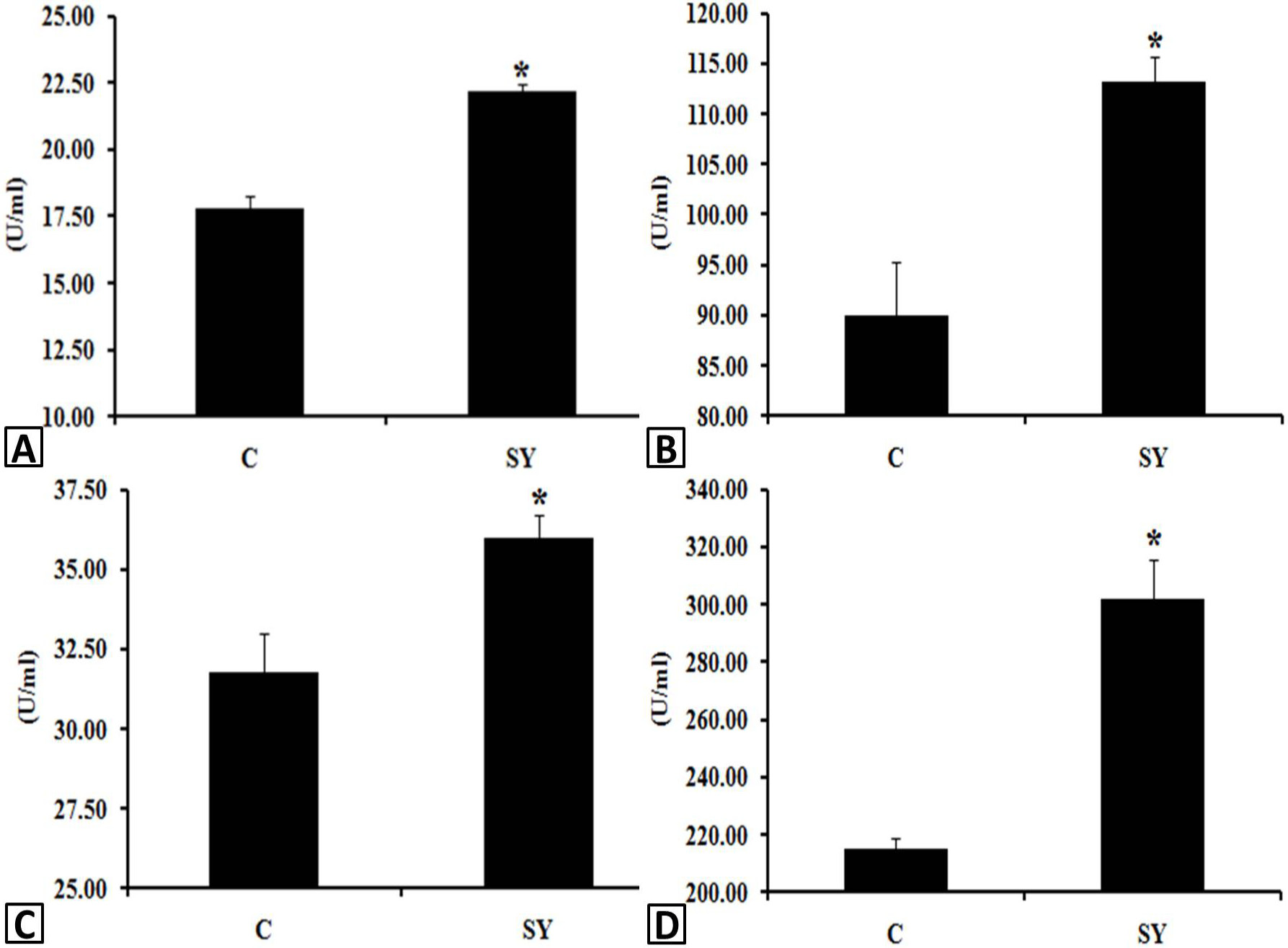Effect of Dietary Selenium Yeast Supplementation on Morphology and Antioxidant Status in Testes of Young Goat
Effect of Dietary Selenium Yeast Supplementation on Morphology and Antioxidant Status in Testes of Young Goat
Iqra Bano1,*, Moolchand Malhi2, Pershotam Khatri3, Saeed Ahmed Soomro2, Hira Sajjad4, Ambreen Leghari5, Muhammad Awais2, Safia Kandhro6 and Shakeel Ahmed Lakho5 and Munaza Soomro7
Effect of dietary selenium yeast (SY) on the histological structure of goat testes. Magnification: A, B, 10X; C, D, 40X. Stain: H&E.
Histological structure of selenium yeast (SY) and control (C) demonstrating assembly of SFT including the BM (red arrow), germinal epithelium comprising of gonocytes and sertoli cells (green arrow) interstitial cells (blue arrow). Stain: H&E. Magnification: 100X.
The effect of dietary SY supplementation on glutathione peroxidase (GPx) and super oxide dismutase (SOD) activity (U/mL) in serum (A, B) and testis (C, D) of goat. * values (mean± SE) differ at p < 0.05 between the groups. The goats in SY were fed 0.3 mg/kg SY while the goats in C did not consumed SY in diet.












